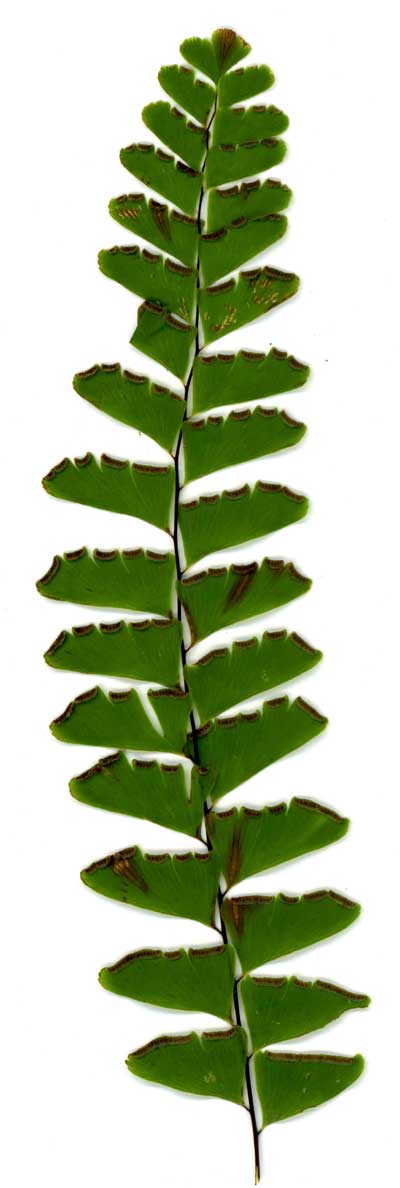|
Hardy Fern Home A. pedatum resources
All Ferns � Pteridaceae �� Adiantum
�Other Genera
|
| Adiantum pedatum | ||
Northern maidenhair, Five-finger fern | ||
|
Etymology
Pedatum describes the shape of a bird's foot.
Description
Rhizome: short-creeping, scales bronzy deep yellow, concolored, margins entire.
Frond: 40 cm high by 30 cm wide, deciduous, monomorphic, blade/stipe ratio: 1:1 more or less. Stipe: purplish-black, grooved above, to 2 mm diameter, glabrous, occasionally glaucous or a few scales at the base, vascular bundles: one v-shaped bundle. Blade: pedate, the primary divisions then pinnately divided, fan-shaped or almost circular, membranaceous to papery, glabrous. Pinnae: 6 to 10 pair, oblong, those closest to the stipe longer, diminishing steadily outwards, slightly tapering to the base, abruptly tapering to the apex; strictly speaking, not really paired; pinnules alternate, oblong, incised on the upper margin; margins crenate; veins free, forking from the main vein along the lower margin. Sori: oblong, submarginal on the upper margin of the pinnule, indusium: false, inrolled margins, sporangia: yellow or yellowish brown, maturity: summer to fall. Dimensionality: The blade is held horizontally, at 90� to the stipe; the FNA gives the height as 75 cm, what it is on the herbarium sheet, not what it is in the real world.. Culture
Habitat: rich, deciduous woodlands.
Distribution: eastern North America.
Hardy to -35�C, USDA Zone 3.
Distinctive Characteristics
Adiantum pedatum and Adiantum aleuticum are very, very similar, the nomenclatural history for the latter providing testimony. The division into two specific taxa is recent, the keys in the Flora of North America often enough leading to unexpected results. One difference, not in the key,�stands out: A. aleuticum sometimes has ascending or vertical pinnae, A. pedatum always has horizontal. This is, of course, unsatisfactory.
|
|
|

Adiantum pedatum. A v-shaped vascular bundle. �Drawing from Ferns of Northeastern United States, Farida A. Wiley, 1936. |

Adiantum pedatum. Pinnule, false indusia, and nearly mature sori. �Scan: Tom Stuart |

Adiantum pedatum. Somewhat ragged pinna. This was captured early autumn where most fronds look worse than this one. �Scan: Tom Stuart |
